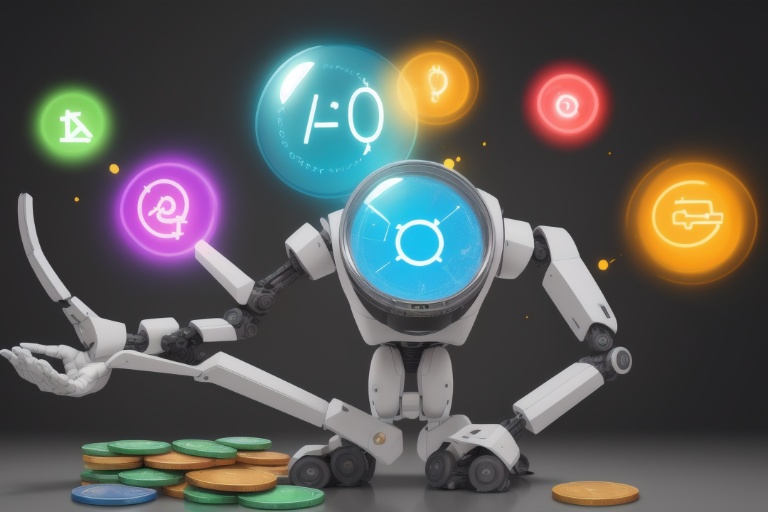The burgeoning field of artificial intelligence (AI) is advancing at a breakneck pace, ubiquitously influencing a gamut of industries with its transformative potential. From the automation of mundane tasks to the delivery of sophisticated predictive analytics, AI stands poised to fundamentally alter the ways in which we engage with our workscape and personal lives. Despite the promise of heightened efficiency and novel applications, this technological juggernaut raises alarm bells in regards to its broader socioeconomic implications.
The burgeoning field of artificial intelligence (AI) is advancing at a breakneck pace, ubiquitously influencing a gamut of industries with its transformative potential. From the automation of mundane tasks to the delivery of sophisticated predictive analytics, AI stands poised to fundamentally alter the ways in which we engage with our workscape and personal lives. Despite the promise of heightened efficiency and novel applications, this technological juggernaut raises alarm bells in regards to its broader socioeconomic implications.
Economic Disparities and the Role of AI
Economic disparities are a critical issue that has been at the forefront of discussions among experts from multiple domains, and AI's trajectory is deeply intertwined with them. A towering figure in the field of economics, Joseph E. Stiglitz, a Nobel Prize recipient, dissects the complex relationship between AI and inequality with the precision of a seasoned scholar. Stiglitz cautions that AI, if unbridled, may extend the chasm between the affluent and the impoverished, magnifying the asymmetry of wealth and influence in society.
The Paradox of Technological Job Displacement
One of the most palpable manifestations of AI's societal imprint is in the realm of employment. With generative AI capabilities burgeoning, producing content eerily reminiscent of human output—be it in the form of written text, graphic designs, or video—there's an increasing displacement of jobs that were traditionally the staples of human creatives, such as copywriters and editors. Stiglitz engages with the paradoxical nature of AI; albeit a beacon of productivity, it necessitates human oversight to uphold the integrity of content and counteract ingrained biases.
AI as a Tool, Not a Replacement
The discourse pivots around the notion of AI as an augmentation tool rather than a wholesale substitute for human labor, particularly in roles characterized by repetitive tasks. Nonetheless, prevailing trends suggest an inevitable surge in AI’s replacement of human roles in such areas, signaling a potential decline in demand for specific skillsets. This sea change invites significant challenges to maintaining a balanced job market, with far-reaching effects on economic inequality.
Balancing Job Creation and Losses
Divergent perspectives clash on the prospective terrain of employment with some proclaiming AI as a harbinger of novel job opportunities. Yet, Stiglitz surfaces concerns that the scale of job losses might overshadow those created by AI innovations. Another element feeding into the discussion is AI’s limitations in replicating human ingenuity and the intrinsic creativity that human artisans imbue in their work. Despite AI’s prowess in generating precise and structured content, there remains an insatiable appetite for the creative and the distinctively human touch.
AI’s Domains of Influence
The sectors where AI could conceivably supplant human labor are frequently those that don’t necessitate a high degree of personal flair or literary finesse. As such, the impact of AI on economic inequality is a topic that demands methodical scrutiny and thoughtful regulation.
The Imperative for Government Intervention
Stiglitz underscores the imperative role of government largely as a mediator; to establish boundaries within which AI deployment can occur, preventing an undue accumulation of wealth and influence within a limited consortium of tech behemoths. Policy frameworks and regulatory mechanisms stand as bulwarks against an unequal AI-powered future.
Societal Values and Human Labor
At the juncture of technology and society, Stiglitz prompts a reevaluation of our societal norms and the valuation we assign to human labor. He predicates a framework not solely obsessed with maximizing profits and operational efficiency, but one that venerates the collective well-being of our community. Suggestions abound for a recalibrated work ecosystem, including truncated work weeks, robust retraining schemes, and a fortified social safety net.
Forward-Thinking for Equitable AI
As we wade deeper into the era of AI, the repercussions on economic inequality will crystallize with greater clarity. The potential of AI to reinvent industry landscapes and broaden the horizon of possibilities is indisputably significant, yet the imperative remains to squarely face the challenges it poses to the workforce and society more broadly. Embracing a forward-thinking, inclusive strategy is paramount to leveraging AI's capabilities while simultaneously forging an equitable and congenial future for all.
In the forthcoming installment of this series, we shall delve into the viable strategies and solutions that aim to soften the repercussions of AI on economic discord, ensuring that the lives it transforms do not succumb to a widening gulf of inequity. Stay tuned for further exploration in Part 2 of this engaging discourse on artificial intelligence and its societal influence.
Information for this article was gathered from the following source.

